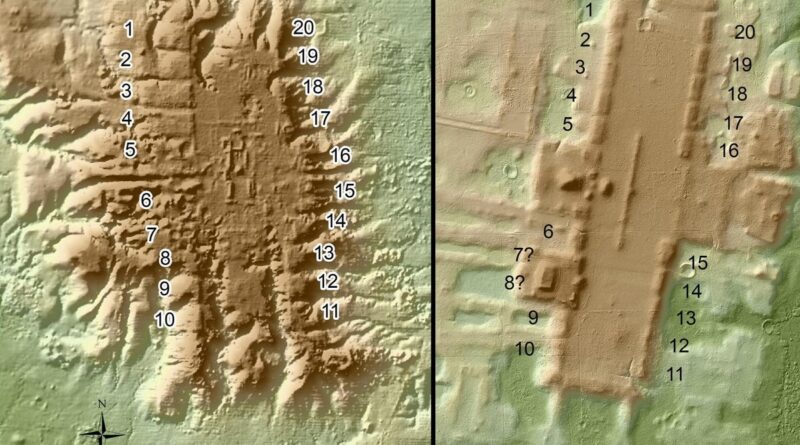Archaeologists Map Nearly 500 Mesoamerican Sites and See Distinct Design Patterns
Archeologists made 3D guides of in excess of 30,000 square miles of precolonial settlements in the thing is today Mexico, uncovering at no other time seen subtleties of how locales were planned and their obvious associations with the old Mesoamerican schedule.
The 478 locales remembered for the new examination were possessed from around 1400 BCE to 1000 CE, and the manner in which they were built seems, by all accounts, to be connected to cosmologies imperative to the networks that lived there. Settlements that line up with adjacent mountain tops or the Sun’s bend across the sky recommend there may have been representative significance to the direction of the design.
The group classified the locales into five unmistakable sorts of compositional game plan, which they think may relate to various time spans and demonstrate more libertarian social orders. Every one of the destinations had rectangular or square elements, which the archeologists say might have been roused by the well known Olmec site of San Lorenzo, which had a focal rectangular space that was reasonable utilized as a public court. The group’s overview and investigation were distributed today in Nature Human Behavior.
“The primary concern of this review is the disclosure of almost 500 normalized edifices across a wide region, large numbers of them having rectangular shapes,” composed lead creator Takeshi Inomata, a paleontologist at the University of Arizona, in an email to Gizmodo. “Until three years prior, we had no clue about the presence of such buildings. They truly compel us to reexamine what was occurring during this period.”
Individuals who planned these settlements are comprehensively called the Olmec and Maya, however there are better, more explicit names for networks that fall under those marks, for example, the Chontal-talking occupants of eastern Tabasco and the Zoke-talking individuals of western Tabasco and Veracruz. The Olmec site maps are especially convenient; the focal point of San Lorenzo is the most seasoned capital nearby (it’s the home of those giant heads you may be acquainted with), and accordingly, archeologists trust it might have set the norm for how to spread out a settlement.
Yet, San Lorenzo was notable as of now; part of the worth of this new examination is featuring the constructions of more modest settlements. “Albeit this piece of Mexico is genuinely open and populated, the greater part of those destinations were not known previously,” Inomata added. “They were in a real sense hiding by not really trying to hide.”


![[pii_pn_e7ae6d83e2fbe1b0] Error Code of Outlook Mail with Solution](https://thehandmaidstale.co.uk/wp-content/uploads/2021/09/hotmail-8tM6_cover.jpg-2-390x205.webp)
![How to solve [pii_email_f4cea690933c501337c1] error?](https://thehandmaidstale.co.uk/wp-content/uploads/2021/09/app-tips-microsoft-outlook-00-hero-9-4-390x205.png)
![How to solve [pii_email_864625849f4d9cdad180] error?](https://thehandmaidstale.co.uk/wp-content/uploads/2021/09/app-tips-microsoft-outlook-00-hero-390x205.jpg)